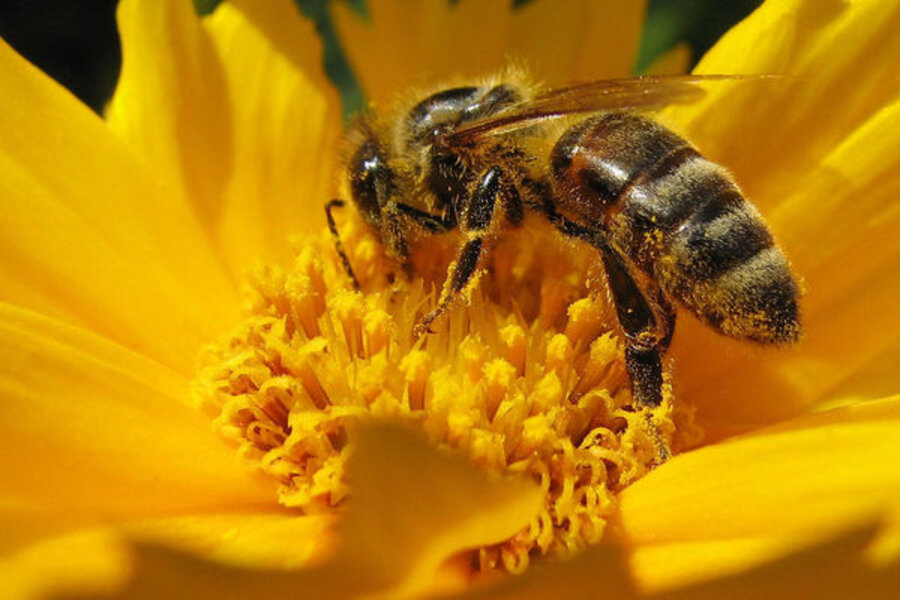More bees, please
Their sound is different from other buzzers. Mean ol’ mosquitoes scream a high pitch as they zip in for the bite, and red wasps roar by with raspy whines. Bees simply drone on like gossipers in the back pew as they dutifully go about their lives in the garden.
I’ve always loved them, even when they made a home in the bedroom wall. Their constant hum is the rhythm guitar of my personal summer soundtrack, but it’s getting harder to hear.
When the first reports of colony collapse disorder came in, the problems seemed limited to commercial hives. This is a huge issue since most food crops are dependent on the work of pollinators, either directly to produce fruit or indirectly, to maintain viable stands of seeds.
But home gardens and local commercial operations seemed to have few problems at first. For the past couple of years, however, the question has been asked too often, “Where are the bees?” There are enough answers to spoke a bicycle wheel – strong storms, warming climate, more concrete than green space, overused insecticides – every month another theory gets posited but the dilemma remains.
I’m not much on specialized garden plans, whether they are devoted to native plants or pizza makings. But lately the reality of my bee garden has come to me: If something is blooming in my (relatively) mild winter climate, bees will find it on the coldest days of the year. I’m convinced that they have me on their radar since they pass through daily, though in smaller numbers than a decade ago. Little did I know that I was developing a style, but they are here when I need them to cross-pollinate the flowers.
Let others garden for the butterflies or to attract hummingbirds – apparently I garden for the bees and all the others come along in their wake. You can do it, too, simply by letting go of perfection and allowing even a few weeds to bloom for the bees.
Lest you think my bee garden is well thought out, I will freely admit that it is a sometimes random combination of flowers planted in beds and pots, but also intentional weeds. The idea is to let something bloom if it will, regardless of what it is.
For a place in the first group, a flowering plant must bloom in a cluster and afford a landing pad for the bees on a petal, sepal, or bract. Ground level to five feet off the ground seems to be preferred in the bee world, and a soaker hose nearby really draws them in on a summer day. I grow a crazy quilt of annuals, perennials, and shrubs chosen because I like how and when they bloom.
Bees like flowering weeds
Intentional weeds are the plants other people spend great sums of money to control. Some have defeated me in that effort, like chickweed and henbit, and we have made peace. They bloom soon after the first of the year and keep the bees happy. I weed them out or mow them down when they appear elsewhere, but the patches alongside my hoop house have become a permanent winter buffet.
Only one "weed" besets my lawn in spring, white clover, and the products to control it are noxious and seldom effective. Conventional wisdom is to be sure and cut them down before they can set seed, and I do that to prevent further encroachment on my zoysia carpet. But a few clumps make a sweet early spring view out my front window before the grass greens up and the bees stay busy.
Blue-eyed grass, Amsonia, soon follows in the weed parade, usually at the same time the fall-planted annuals (larkspur, snapdragons, and calendula) really begin to show off.
Plan three seasons of bloom
I actually plant a few plant thugs that are easily contained in stressful growing circumstances. This group includes Mexican hydrangea or Kashmir bouquet, four-o-clocks, and Nell’s Alstroemeria made locally famous by a great gardener named Mynelle, not me. They stay in their space, growing in no more than gravel and bark, along the edge of the driveway and bloom when it rains.
About the time they get started, the planted garden is in full swing. As the summer surge of rampant growth gets going, I cultivate a few of the native "weeds" such as aster, boltonia, and autumn clematis to fill out the fall along with shrubby abelia.
This is what I do, even though my little efforts will not change the ultimate future for bees or answer the overarching questions about them. It does keep the bees around so I can enjoy their comforting buzz and know they are doing what needs doing. If I’m honest, maybe I’m focused on bees to make up for the times as children that we trapped them in jars while they were drunk on ligustrum flowers in the back hedge.
-----
Nellie Neal grows plants in the Deep South and writes about them. Her newest book is "Gardener’s Guide to Tropical Plants."





